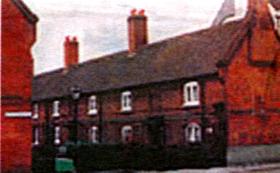The Good Work of Elias Davy
Elias Davy Founded the almshouse for the poor in 1447.

In 1443, Elias Davy, Citizen of London and Member of the Mercers Company, purchased a marshland near to Croydon Parish Church to provide an almshouse for the poor.
By April 1447 it had been drained, orchards and gardens had been planted, four cottages and almshouses for seven individuals of either sex built and tenants found for the cottages and remaining farmland to provide financial support for his charity.
Its importance as a gift was recognised by Croydonians who called it The Great Almshouse until the late 19th century when the building was enlarged and use of the nickname died out.
Successfully managed over the centuries by Vicars of Croydon and Trustees, including members of the Mercers Company, the charity combined with others in 1975 to provide a new block of flats sited in Duppas Hill Terrace and named the Elias David Almshouses, Elias Davy having been mistranslated in very early years.
So who was this man considered to be one of Croydon's most important benefactors ?
He was born about 1385, the place as yet unknown.
Elias Davy gained his Freedom of the City in 1405/6. He dealt extensively in wool and luxury fabrics, reaching the peak of success in 1433. He married twice, his first wife, Matilda died after a brief time together. He then married Elena Roos, the young widow of Mercer Richard Roos and inherited a stepson, Richard Roos.
Elias and Elena had two children, Elias who did not reach adulthood and Margaret, who married John Derby, Citizen of London, Master of the Drapers Company, Sheriff Auditor and Alderman.
Elias Davy and hid family lived in the parish of St. Michael, Bassieshaw, in the City of London, He was a man of deep religious faith devoted to the orthodox practices of established church.
In 1443, at the age of 58, Elias Davy began the preparation for his Almshouses, purchasing and preparing land, obtaining a licence from King Henry VI and permission from the Archbishop of Canterbury, John Stafford, and the Abbot of Bermondsey, John Bromleigh.
In this period Croydon's first almshouse, founded by William Oliver, Vicar of Croydon, was abandoned after its founder had fallen into debt.
Elias died on December 4, 1455, aged 70 and was buried in an altar tomb on the north wall of Croydon Parish Church which was then being redeveloped.
His tomb survived the fire of 1867 but not the rebuilding when it was demolished, to make way for a pillar.
Among his instructions were requests for almshouse residents to pray around his tomb daily and to remember his 'Years Mynde' (the anniversary of his death) annually. The Mynde Day Service discontinued during the reformation and was recommenced in the year 2000, including the prayers he had requested.
Elena Davy outlived her husband, spending her last years in Acton. In Elias Davy's will, lengthy and written in ecclesiastical Latin, he left generous bequests to the churches of St Michael, Bassieshaw and St John the Baptist, Croydon. He appears to have been a devout, shrewd, kind person who gave great attention to details; like others of his time, he was concerned for his soul and the souls of his parents and Matilda.
His almshouse, Croydon's oldest, has been incredibly successful, providing secure accommodation and a caring community for 556 years. Yet, by many, his name has been forgotten.
A full version of this article appears in 1 the latest edition of the Croydon Natural History & Scientific Society's March bulletin. The Society can be contacted at its registered office at 96a Brighton Road, South Croydon CRZ BAD.
